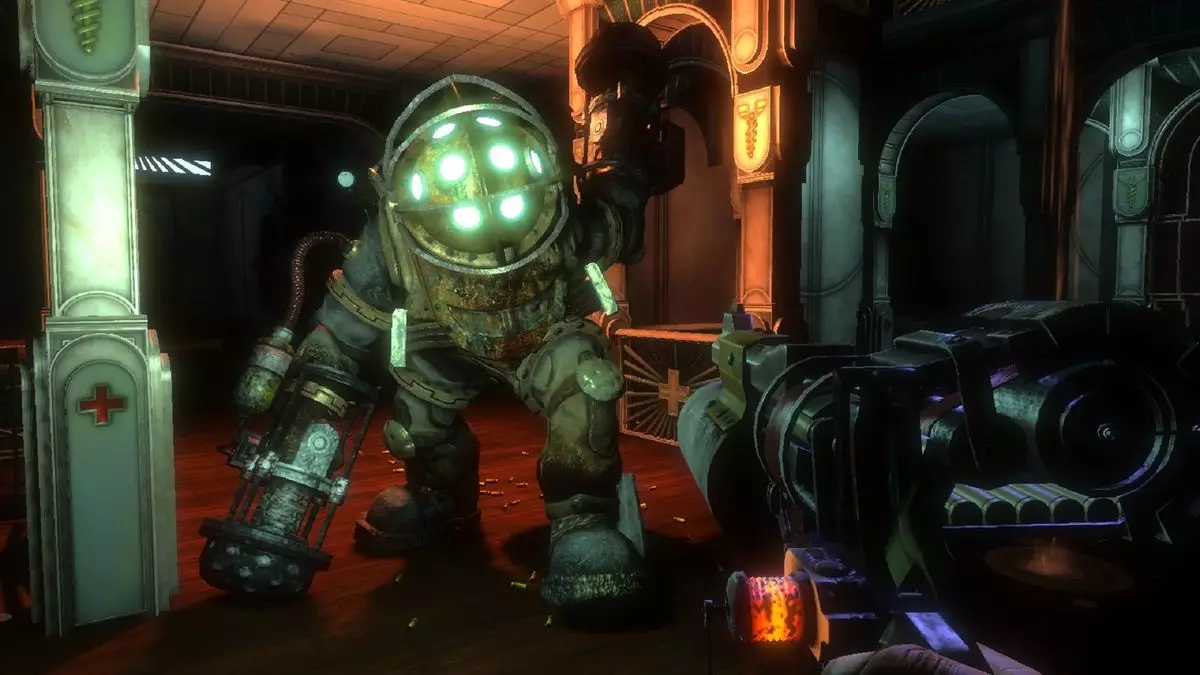In the realm of video game development, it is rare for creators to openly critique their most celebrated works. Ken Levine, well-known for his contributions to the BioShock series, recently took a candid look back at his iconic shooters, describing them as “basically a corridor.” This observation arose during a conversation with Gameindustry.biz, where Levine unveiled his aspirations for his upcoming project, Judas, which he describes as “BioShock-but-in-space.” This statement not only highlights Levine’s self-awareness but also establishes a benchmark for his latest endeavor, marking a clear departure from linear gameplay design.
Levine’s critique of his earlier titles raises questions about player agency and narrative structure in modern gaming. He argues that the BioShock games, while brilliant in execution, constrained players to a long corridor experience punctuated by scripted events, relegating much of their agency to mere observance of the unfolding story. In contrast, Judas seeks to transcend this limitation by crafting a world where player choices dynamically impact the game environment and narrative outcomes. “Judas is made very, very differently,” Levine states, emphasizing a more interactive and responsive gameplay experience that aligns closely with the player’s actions.
A Detailed Web of Player Interactions
The ambitious approach Levine is taking with Judas illustrates an intricate web of interactions that developers have struggled to achieve in the past. According to Levine, Judas will feature characters that actively observe and respond to player actions in real time. This means that every choice made by the player will ripple throughout the game in ways that are difficult to predict. “Even just characters observing a long range of player action and commenting on it,” he elaborates, indicating a depth of engagement that challenges traditional storytelling methods. The complexity of this requires meticulous planning, as developers must anticipate myriad player behaviors and craft nuanced character dialogues that feel authentic.
This process, as Levine notes, is no small feat. The task of ensuring that characters provide organic feedback to player actions demands extensive writing and design effort. It involves not only mapping out potential player paths but also crafting in-character responses that resonate with the game’s narrative context. The player experience in Judas promises to be highly individualized, as the narrative and character interactions will vary significantly from one player to another. This level of immersion stands in stark contrast to the somewhat scripted nature of the BioShock series where player choices often led to predetermined outcomes.
As anticipation builds for Judas, fans are left wondering how it will redefine the gaming landscape. Levine’s shift towards a non-linear, responsive design raises exciting possibilities for how stories can be told in interactive media. With the ongoing development of a new, untitled BioShock game also on the horizon, there is speculation on whether it will adhere to the traditional formula or embrace the innovative approaches that Levine is exploring with Judas. Ultimately, Levine’s candid reflection on his past work and his ambitious vision for the future signal a pivotal moment in video game design, potentially reshaping how players experience narratives in virtual worlds.


Leave a Reply